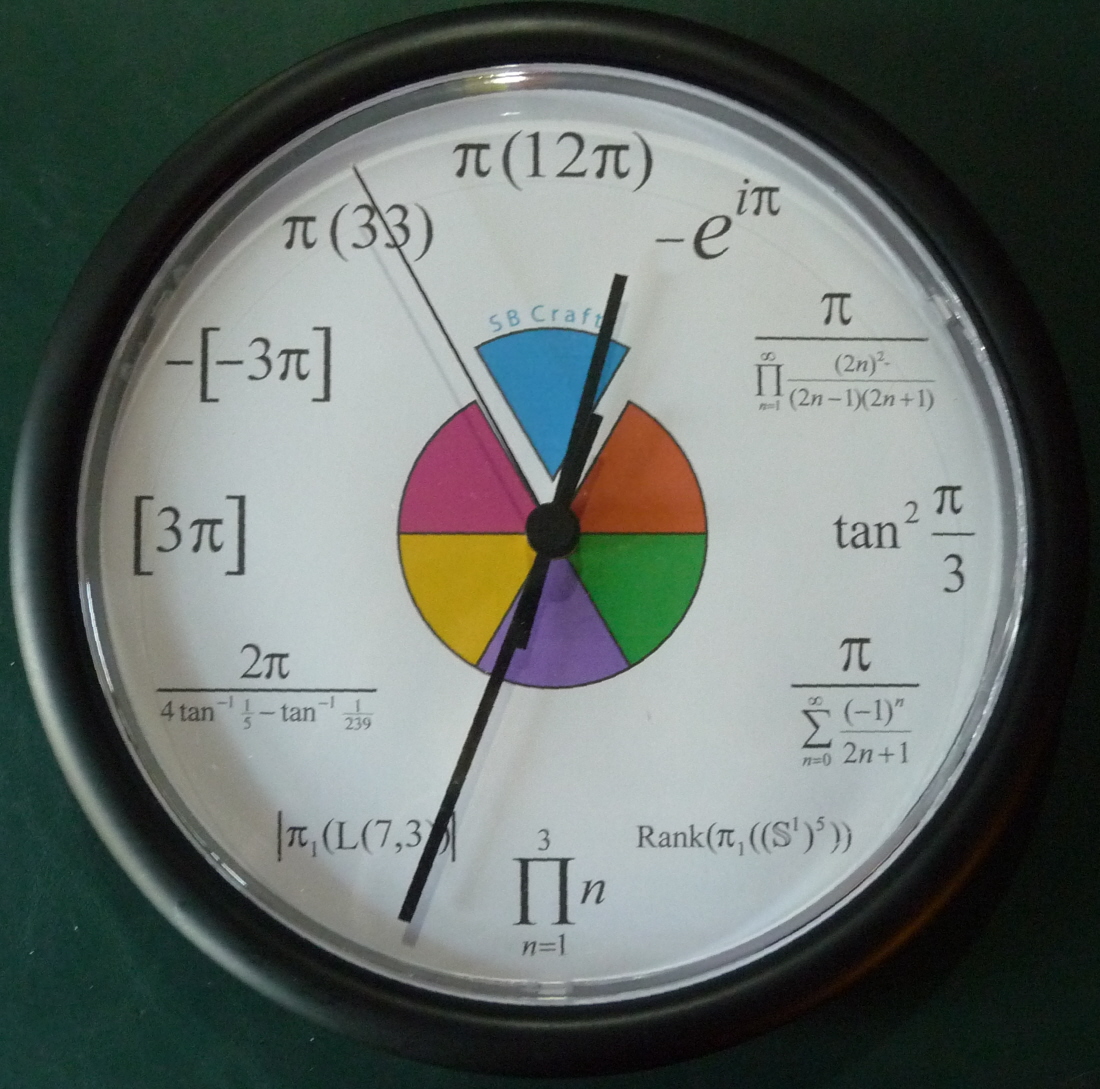Chairman Meow
Class IV
This is cool and all, but why? There will always be a higher prime number.
Why not?
This is cool and all, but why? There will always be a higher prime number.
This is cool and all, but why? There will always be a higher prime number.
This is cool and all, but why? There will always be a higher prime number.
This is cool and all, but why? There will always be a higher prime number.

Note that the pi symbols on the clock do not always represent 3.14159... .
 isn't that cheating? Or, I mean, isn't that a little unfair?
isn't that cheating? Or, I mean, isn't that a little unfair?isn't that cheating? Or, I mean, isn't that a little unfair?
Do you mean that it's unfair that the pi symbol can stand for different concepts?
Is it just me, or does -e^i*pi look remarkably like Euler's identity, except that it is negative and lacks a '+ 1'?

It was suggested that pi might stand for the largest prime factor. That works for 11, but not for 12.

